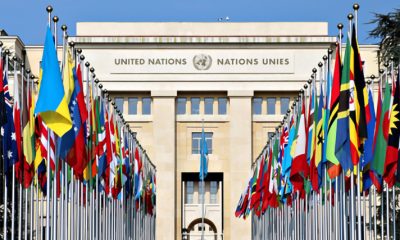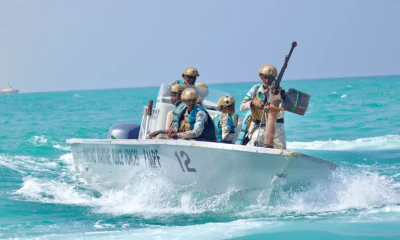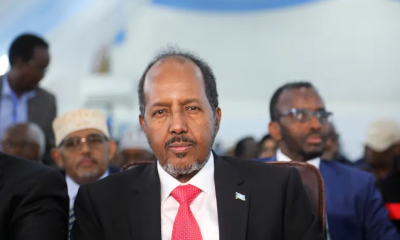Latest News
How did a UN helicopter fall into al-Shabab’s hands in Somalia?

On Wednesday (11), armed group al-Shabab captured a United Nations-contracted helicopter in Somalia, killing one person and kidnapping several other passengers and crew members on board. The helicopter was on a medical evacuation mission from Beledweyne city in central Somalia and was heading to Wisil town approximately 500km (310 miles) away, but had been forced to land midway through the journey after an apparent accident, when al-Shabab attacked.
This latest attack is one of al-Shabab’s more daring assaults in recent months and comes amid an intensifying offensive against the group by the Somali military, launched in 2022. In its early stages, the military campaign saw some gains but suffered setbacks last year when al-Shabab recovered territory it had lost.
The UN World Food Programme, the largest humanitarian operator in Somalia, said it had suspended all its flights in the area as a result of the attack.
Details are still unclear, but here’s what we know so far about the assault and kidnapping:
A United Nations memo seen by Al Jazeera confirmed that the kidnapped workers on board the helicopter were third-party contractors of the UN, and that two of them were Somali men. There were also people from African and European countries, but it’s not clear what the exact nationalities of these passengers are. Some reports say there were eight passengers, others say there were nine in total.
One person was killed in the attack, according to several reports. The location of two other passengers is unknown and it’s possible they may have escaped in the attack. The precise number of kidnapped persons currently in the hands of the armed group is not clear.
The helicopter was on a medical evacuation mission. At least some of its passengers were military personnel and it was also carrying medical supplies onboard. The aircraft had taken off in Beledweyne city in central Somalia and was heading east to Wisil town. But it crash-landed near Hindhere village after an object struck its main rotor blade. The crash site was within al-Shabab territory and bordering the Galguduud region on the front line of the government offensive. It is not clear what the object was or whether it had been deliberately launched by al-Shabab fighters.
The Washington Post reported that al-Shabab fighters set fire to the vehicle after they seized the passengers.
Al-Shabab is an armed group that has operated in Somalia since 2006 and wishes to create a state that adheres to its strict interpretation of Islam in Somalia. The group, which commands thousands of fighters, has targeted civilians and military outposts in deadly and often gruesome attacks, launching assaults into neighbouring Kenya on some occasions.
It currently controls large swaths of territory in southern and central Somalia, where many regard its civil and legal institutions as being more stable than those of the state. To generate revenue, al-Shabab taxes civilians in its area of control, raking in about $100m monthly according to the Africa Center for Strategic Studies (ACSS).
Al-Shabab had a strong presence in the country’s capital city for a time in the late 2000s, but African Union (AU) troops helped to push the group out of Mogadishu in 2011. Since the mid-2010s, the Somali military, supported by AU troops and US bombing, has tried to seize back control from its strongholds. President Hassan Sheikh Mohamud, who was elected in May 2022, promised to crack down harder on al-Shabab and his government has warned the armed group to hand in their guns or face military assaults.
But al-Shabab fighters have continued to launch daring and deadly offensives. The group was linked to 6,225 deaths in 2022 alone, according to ACSS, representing a 120 percent increase in its attacks since 2019. Some of al-Shabab’s most recent assaults include car bombings in Mogadishu in October 2022, which killed about 120 people. In November of the same year, al-Shabab fighters seized a popular hotel close to the presidential villa and maintained possession of it for more than a day. Nine people were killed in that attack.
Although al-Shabab has not formally taken responsibility for Wednesday’s UN helicopter attack, it has in the past kidnapped aid workers, some of whom are still missing.
There aren’t many details about a potential rescue mission.
Somali officials told Reuters on Thursday that the government is working to free the kidnapped workers but added that the area where they were taken would be difficult to access.
“The government has been undertaking efforts to rescue the crew since yesterday when the accident happened, and efforts still go on,” Information Minister Daud Aweis, said without providing more details of the rescue mission.
Military officials speaking to Reuters, painted a more dire picture however, saying that a land operation to rescue the hostages was not feasible because the area is fully under the armed group’s control and the local population supported al-Shabab.
“I do not know if there will be commandos on planes with the help of foreigners,” one Major said. “That may be the only possible way to rescue them, but so far it has not happened.”
(Aljazeera)
Sri Lanka Air Force (SLAF) sources confirmed earlier today (12) that a SLAF MI-17 helicopter on a UN mission had crash landed in the Central African Republic.
Latest News
Temporally pause rooftop solar during day time from 13th to 21st April -CEB

The Ceylon Electricity Board has appealed to all rooftop solar owners across the country to voluntarily switch off their solar systems during day time hours (until 3pm each day) from April 13th to 21st to prevent partial power outages or nationwide blackouts which may occur.

Foreign News
Hundreds of flights cancelled in China as strong winds hit capital
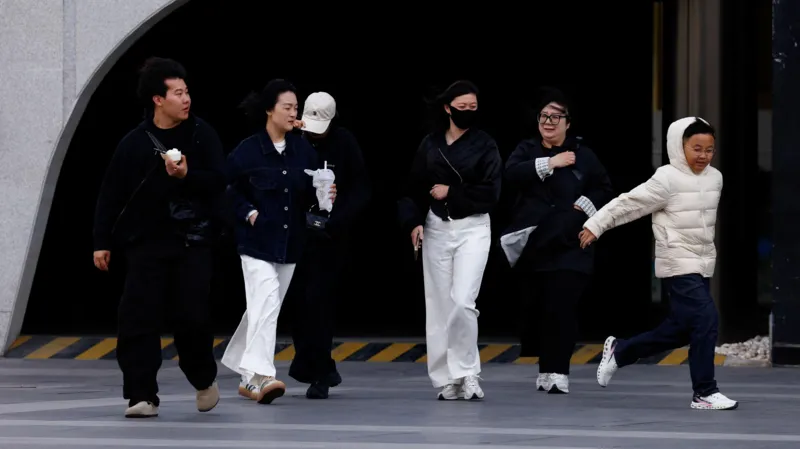
Hundreds of flights have been cancelled and trains suspended as gales hit Beijing and northern China today [Saturday].
By 11:30 local time (03:30 GMT) today, 838 flights had been cancelled at the capital’s two major airports, according to the news agency Reuters.
Wind gusts of up to 93mph (150kph) – the strongest in the Chinese capital for more than half a century – are set to continue through the weekend, forcing the closure of attractions and historic sites.
Millions were urged to stay indoors on Friday, with some state media outlets warning that people weighing less than 50kg may be “easily blown away”.
Train services, including the airport’s express subway line and some high-speed rail lines, have been suspended.
Parks were also shut, with some old trees reinforced or trimmed in preparation – but almost 300 trees have already fallen over in the capital.
A number of vehicles were damaged, but no injuries were reported. In Beijing, most residents followed authorities’ advice to stay indoors after the city warned 22 million residents to avoid non-essential travel.
“Everyone in Beijing was really nervous about it. Today there are hardly any people out on the streets. However, it wasn’t as severe as I had imagined,” a local resident told Reuters.
Meanwhile, a businessman from the Zhejiang province, near Shanghai, had his flight home cancelled.
“Because of the severe winds, all flights scheduled for last night and today were cancelled. So I will probably rebook my flight in a couple of days. I’m now basically stranded in Beijing,” he said.
The strong winds are from a cold vortex system over Mongolia and are expected to last through the weekend.
Winds bringing sand and dust from Mongolia are routine in spring, but climate change can make storms stronger and more severe.
Beijing issued its first orange alert for strong winds in a decade, with the strongest winds expected to arrive on Saturday.
China measures wind speed on a scale that goes from one to 17. A level 11 wind, according to the China Meteorological Administration, can cause “serious damage”, while a level 12 wind brings “extreme destruction”.
The winds this weekend are expected to range from level 11 to 13, with conditions expected to ease by Sunday.
[BBC]
Latest News
Iran says it wants ‘fair agreement’ as nuclear talks with US begin in Oman
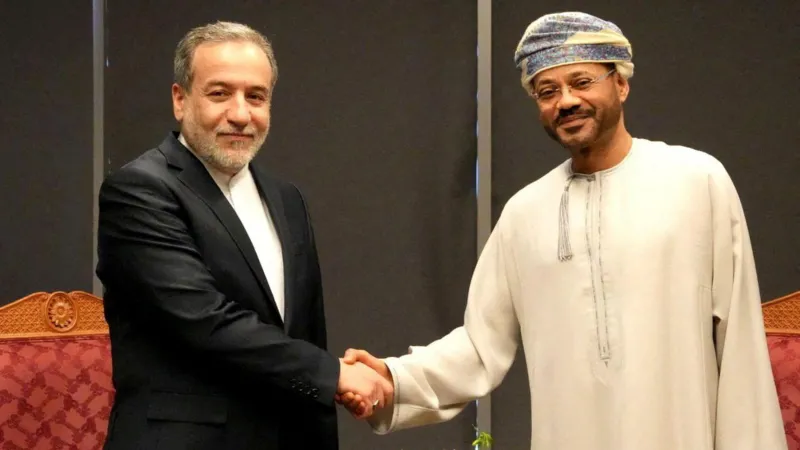
Iran and the United States have begun talks in Oman over Teheran’s nuclear programme – the highest level meeting between the two nations since 2018.
Iran’s Foreign Minister Abbas Araghchi told Iranian state television his country wanted a “fair agreement”, with his spokesperson saying he did not expect talks to last long.
President Donald Trump pulled the US out of a previous nuclear agreement between Iran and world powers in 2018, and has long said he would make a “better” deal.
It is unclear if the two delegations will sit in the same room, but the talks are seen as an important first step to establishing whether a deal can be done, as well as a framework for negotiations.
Araghchi has repeatedly emphasised that indirect talks were best at this stage.
Trump’s envoy Steve Witkoff, who is leading the US delegation, has only spoken of meeting face-to-face.
But the most important issue is what kind of deal each side would accept.
Trump sent a letter to Iran’s supreme leader via the United Arab Emirates last month, saying he wanted a deal to prevent Iran from acquiring nuclear weapons and to avert possible military strikes by the US and Israel.
Iran hopes a deal to limit, but not dismantle, its nuclear programme in exchange for sanctions relief.
“Our intention is to reach a fair and honourable agreement from an equal position, and if the other side also comes from the same position, then hopefully there will be a chance for an initial understanding that will lead to a path of negotiations,” Araghchi said.
He added that the team that came with him was made up of experts “knowledgeable in this particular field and who have a history of negotiating on this issue”.
An unnamed source in Oman told the news agency Reuters that the talks would also seek to de-escalate regional tensions and secure prisoner exchanges.
Trump disclosed the upcoming talks during a visit by Benjamin Netanyahu to the White House on Monday. The Israeli prime minister said on Tuesday that both leaders had agreed “Iran will not have nuclear weapons”.
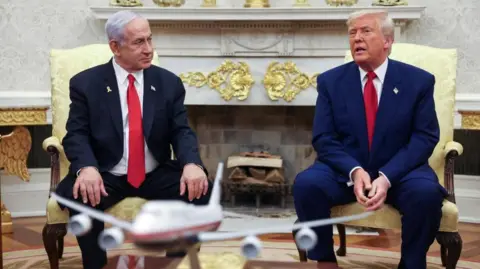
Trump has warned that the US would use military force if a deal was not reached, and Iran has repeatedly said it will not negotiate under pressure.[BBC]
The US president told reporters in the Oval Office on Monday that this weekend’s meeting in Oman would be “very big”, while also warning that it would “be a very bad day for Iran” if the talks were unsuccessful.
Iran insists its nuclear activities are entirely peaceful and that it will never seek to develop or acquire nuclear weapons.
However, since Trump pulled out of the 2015 agreement – which expires later this year – Iran has increasingly breached restrictions imposed by the existing nuclear deal in retaliation for crippling US sanctions reinstated seven years ago, and has stockpiled enough highly-enriched uranium to make several bombs.
Witkoff has also been involved in peace talks on the Russia-Ukraine war, meeting Russian President Vladimir Putin in St Petersburg on Friday.
[BBC]
-

 Business6 days ago
Business6 days agoColombo Coffee wins coveted management awards
-

 Features7 days ago
Features7 days agoStarlink in the Global South
-

 Features2 days ago
Features2 days agoRobbers and Wreckers
-

 Features4 days ago
Features4 days agoSri Lanka’s Foreign Policy amid Geopolitical Transformations: 1990-2024 – Part III
-

 Features7 days ago
Features7 days agoModi’s Sri Lanka Sojourn
-

 Midweek Review4 days ago
Midweek Review4 days agoInequality is killing the Middle Class
-

 Features6 days ago
Features6 days agoSri Lanka’s Foreign Policy amid Geopolitical Transformations: 1990-2024 – Part I
-

 Features5 days ago
Features5 days agoA brighter future …


